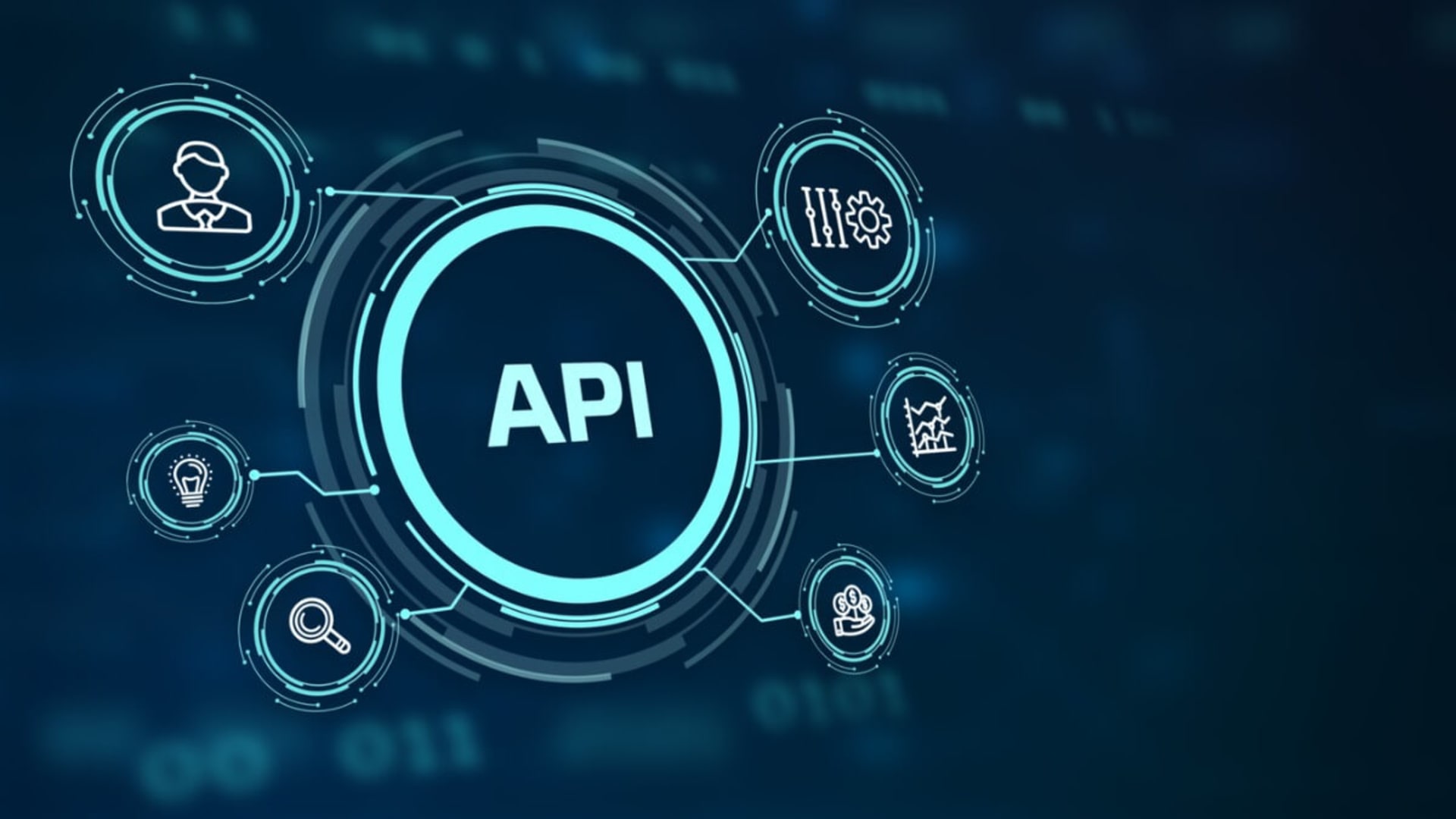Application Programming Interface (API) is a set of protocols that allows different systems to communicate and work with each other. They are also responsible for system interconnectivity and third-party data transfer. The API management market is expected to reach $13.7 billion by 2027.
Process tools, such as API integration systems, significantly increase the speed of data transfer and boost automation. Many businesses worldwide use API integration tools for connecting different software systems. They are critical to driving business integration and accessing functionality. That’s why many data integration consultants recommend using such tools for enterprise design.
What is API integration?
API integration is a process that allows two or more systems/software programs to connect with one another. This technique enables them to share data and functionality through APIs, improving productivity and data accuracy.
To integrate APIs, engineers first must identify the data that needs to be shared between two systems. They also need to analyze the communication protocols and underlying schema to generate a relationship between the two systems. This will help them select the APIs that need to be integrated.
After this data is collected, you can begin the process of integrating the selected APIs. This can be done in two ways, through custom scripts and integration platforms.
You can write custom XML/JSON scripts to be added to HTML or Javascript code. This is a time-consuming and expensive approach to API integration since the cost of maintaining custom software is very high.
Or you can use API integration platforms for creating or managing your API. API integration platforms enable businesses to create and manage API connections between different software tools/enterprise solutions.
Once the integration is complete, you need to test these API connections (in a test environment) to ensure they work correctly. After that, you can deploy it into a production environment.
What are the benefits of API integration tools?
API integration tools are very helpful for connecting software, databases, and enterprise systems, among others. They also increase the speed of real-time data transfer and allow businesses to transfer quickly and efficiently. There are several benefits of using API integration tools:
Reduction of manual coding
API integration tools allow businesses to automate the integration process. This reduces manual errors and the cost of development, since businesses don’t need to create and maintain custom scripts for integration.
Scalability
API integration tools improve the project’s scalability since API developers don’t need to write custom code for scaling applications. Furthermore, the platform’s connectors are coded in such a way that they can handle large volumes of data/transactions.
Improved business innovation
API integration allows developers to access the data and functionality of different systems and boost their capabilities. Robust reporting and comprehensive data transfer through APIs can be used to drive business decisions. It can also generate new revenue models. API integration tools also enable developers to maintain end-to-end visibility for their APIs.
What are the things to consider when choosing an API integration tool?
Pricing
Before adopting a new technology/tool, you need to check the price of your selected solution. This is especially important for small- and medium-scale businesses that work on limited budgets. This pricing should also take into account the cost of maintenance and updates, along with licensing fees.
Desired features
You need to make sure that your selected solution actually provides the value you need. It should also be able to support your required data formats and have a valid proof of concept. If your selected tool doesn’t support your use case, adding it to your infrastructure is pointless.
Scalability
To future-proof your business, your selected tool should be able to handle the traffic (requests) from your existing and new customers.
Alerts and notifications
Make sure that your selected tool has notifications/alerts set up for common issues and exceptions. It should also be able to generate notifications to the user before reaching critical system failure.
Security
Your selected tool should be secure and compliant with data governance protocols. It should preferably have built-in security features for authentication and authorization.
Best API Integration Tools for 2025
Now let’s have a look at some of the premier API integration tools for 2025:
-
Boomi
Boomi is a cloud-based, no-code API management tool. This iPaaS solution is developed by Dell and uses API connectors to create connections between in-house tools, SaaS software, and on-premises systems. Real-time API lifecycle management through this tool increases productivity and improves the performance of the API ecosystem.
Features
- Its drag-and-drop features allow engineers to easily create and publish API connections between composite applications with aggregated data.
- It has a very easy-to-use UI for monitoring the API environment. Users can use its dashboards for monitoring analytics, traffic management, and access control.
- This tool allows developers to create consistent and secure API connections by restricting data access based on roles. You can also use this tool for API activity monitoring and reporting.
-
Zapier
Zapier is an integration platform that allows users to create API connections for cloud and web-based tools. This tool is easy to use and can be comfortably used by people who don’t have a technical background.
Zapier’s integration workflows, called zaps, allow users to integrate their software with other software solutions/systems, such as messaging, networking, CRM, BI, and networking. You can also use zaps for workflow automation.
Features
- It allows users to create a single trigger to perform multiple tasks. For example, when a customer fills a signup form, the information can be added to the database and CRM, and the customer’s email can be enrolled to the newsletter.
- Through its advanced notifications feature, Zapier can notify multiple teams in one go. You can also set message priorities and use them to perform conditional workflows.
- Using this platform, developers can perform customized task automation based on filters. You can also schedule tasks.
-
Cleo
Cleo is a tool for API integration for modern and legacy systems. With this tool, users can also create custom integrations through API connectors. In addition, it allows users to connect to big data tools such as Hadoop.
This tool can perform API-based integration for REST and SOAP APIs (i.e., it can create API connections between APIs coded in XML and JSON). This is typically for EDI and B2B integration.
Features
- This tool allows users to connect to cloud infrastructure through pre-configured connectors and templates for efficient communication.
- It increases API visibility through customizable dashboards and real-time summaries.
- This tool has options for real-time alerting and monitoring to alert stakeholders of any issues.
- It can connect to different software systems such as CRM, ERP, and end-to-end EDI system connections. You can use it to connect with databases such as IBM DB2, Azure Blob, and others.
-
IBM API Connect
This developer toolkit by IBM can generate RESTful and UDDI API connections between two software systems. Users can also use it for API lifecycle management.
This toolkit uses an API designer to create and configure native integrations that can be monitored through a graphical and command-line interface. It can be used to create API connections between cloud-based and on-premises systems.
Features
- This tool decouples the front-end APIs from the back end.
- It has drag-and-drop assembly features and templates that allow engineers to easily create and configure APIs. They don’t need to write complex XML code.
- Its API categorization feature aims to improve searchability and governance. You can manage both internal and external APIs through a single portal.
- This tool has options for open authentication (OAuth) and registry verification (through LDAP and authentication URL).
-
Software AG
Software AG is a highly useful API integration tool that allows businesses to seamlessly integrate processes and tools. You can also use it to connect microservices, mobile apps, and enterprise software solutions (ERP, CRM, etc.) It also has authentication and access control features for added security.
Features
- This tool can be used for designing and managing, and publishing REST, SOAP, and OData APIs.
- Developers can use its developer portal to test API changes and track usage. The vendors provide rich documentation and community support for new users.
- It has built-in workflows for managing third-party access. You can also secure transport and message layers through authorization and digital encryption.
- It allows engineers to perform changes to multiple APIs simultaneously (such as naming conventions and security protocols).
-
Tray.io
Tray.io is a low-code API integration tool that creates integrations between SaaS applications through RESTful APIs. You can also use its workflow editor to create custom workflows. In addition, it can connect to third-party tools such as Salesforce, Arsana, and Slack.
Features
- It uses triggers to initiate workflows for service-based requests.
- This tool can create connections for a variety of tools such as databases, eCommerce systems, and analytics platforms.
- Its drag-and-drop interface is easy to use and allows developers to easily scale their systems through the tray platform.
-
MuleSoft
MuleSoft is an end-to-end API design and management tool. You can use it to manage endpoints and servers through its Enterprise Management Console (EMC).
Using this tool, developers can perform governance checks to ensure that their APIs are compliant. It has options for API monitoring and log analysis, through which you can perform RCA.
Features
- Its flexible API gateway allows users to easily create and manage APIs.
- It is a highly secure tool with prebuilt policies.
- This tool has a hyperscale log management feature that allows developers to look at security flaws in real-time. You can also validate governance compliance at runtime.
Conclusion
API integration tools support multiple API stacking and allow developers to quickly fetch data and functionality from other systems. They also reduce developer workload and help them access private and public APIs.
API integration tools are necessary for businesses connecting with different data sources such as databases, software solutions, enterprise solutions, and third-party websites. They also help users with API monitoring and maintenance. That’s why many engineers consider it an API best practice to add such tools to their infrastructure.
FAQs
Who uses API Integration Tools?
API integration tools are used by top software developers/engineers who work on system design and integrations. Any IT team working on software management and data transfer will also use API integration tools to manage their processes.
Furthermore, it is used by independent SaaS vendors and consultants to integrate their products with other enterprise solutions.
How do you integrate an API?
First, you need to identify the data and functionality that needs to be transferred between two systems. This will help you choose the need to be integrated. This step may also require identifying the API endpoints and obtaining the API key/access token from the API provider.
After that, you can either write custom API scripts or use API integration platforms for creating API connections. Once you have tested the integration in the test environment and fixed the bugs, you can deploy it in the production environment for enterprise data transfer. You also need to monitor the APIs to make sure that they are working currently. Any bug fixes/updates can be done in later releases.
Which businesses use API integration platforms?
Many major businesses worldwide use API integration for connecting to other systems. E-commerce businesses use APIs for connecting to payment vendors and inventory management systems. Transportation companies use APIs for connecting to geographical mapping tools and payment platforms. Healthcare businesses use API integration methods to connect to billing vendors and medical records management systems.
What are the different types of API?
The different types of APIs are:
- External API – It is also called an Open API and can be used by many developers/companies. They offer moderate security and authentication.
- Partner API – They are only made available to select developers/vendors/businesses, typically under a usage license. Partners are paid for their API use.
- Internal API – These are used by the business to connect to internal systems. These typically have very weak security.
- Composite API – These are used for creating API connections from multiple complex sources.






